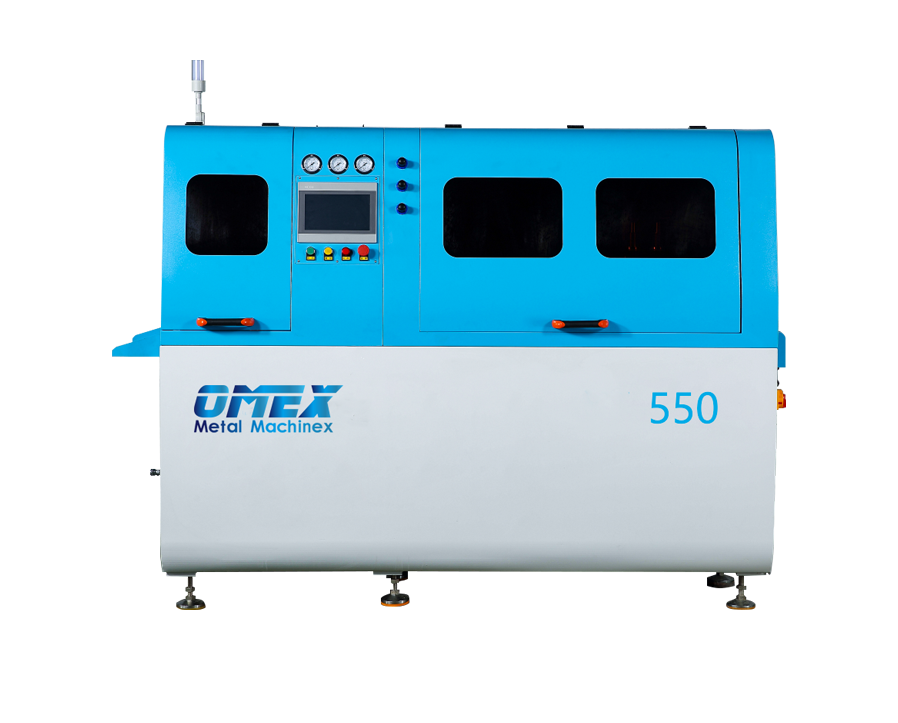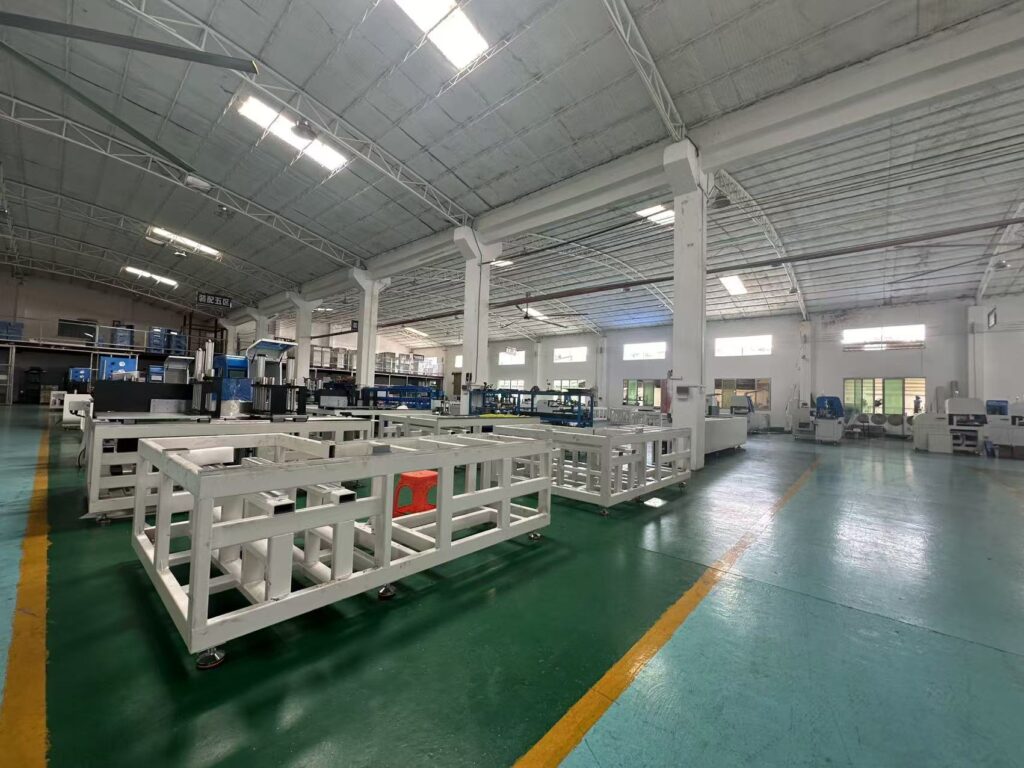We make it easy for you to build your brand by providing a one-stop solution to your company OEM/ODM production.







A circular sawing machine is a cutting tool that uses a rotating circular blade to cut through materials such as metal, wood, or plastic. These machines are widely used in metal fabrication, automotive manufacturing, construction, and various other industries where precise and efficient cutting is required. Circular sawing machines can be manual, semi-automatic, or fully automatic, depending on the level of automation and production needs


Weinview intelligent HMI 10 inch screen. User-friendly interface with touch screen system. It makes the operation more easily.







HSS blades are engineered for high-speed cutting, which allows for faster processing times without compromising on cut quality. This makes them ideal for production environments where efficiency is key.
Due to their durability and resistance to wear, HSS blades typically have a longer service life compared to other blade types. This reduces the frequency of blade changes, leading to lower downtime and higher productivity.
While HSS blades may have a higher upfront cost than some other blade types, their longevity and performance make them a cost-effective choice in the long run. Reduced downtime and lower replacement costs contribute to overall savings.


Aluminum is a softer metal, which means it can be cut at faster speeds compared to harder metals like steel. Sawing machines for aluminum are designed with higher RPM (3500rpm) to efficiently cut through the material without sacrificing precision.
Choosing the right blade for aluminum cutting is crucial. The most common types of blades used for aluminum are:
Our machines at MachinexTech come equipped with the option of carbide-tipped, fine-tooth blades, ensuring smooth, precise cuts.
Aluminum can generate heat during cutting, particularly at higher speeds. A good lubrication or coolant system helps to:
Many of our aluminum sawing machines are fitted with automatic lubrication systems to keep the blades and material cool during the cutting process.
Due to aluminum’s softness, vibrations during cutting can lead to inaccuracies or deformations in the material. Our sawing machines are built with solid, stable frames and low-vibration technology to ensure precise cuts even at high speeds.



The material you intend to cut is the most critical factor in choosing the right circular sawing machine. Different materials require different cutting speeds, blade types, and power levels.
Metal: Metals such as aluminum, steel, and stainless steel require circular saws with high torque and often variable cutting speeds. For harder metals, it’s essential to have a durable, carbide-tipped, or diamond-coated blade.
Wood: For wood, the cutting speed is usually higher, and the blade should have larger, widely spaced teeth to avoid clogging. Wood cutting often requires adjustable angles for beveled or miter cuts.
Plastics: Cutting plastic requires fine-toothed blades and moderate cutting speeds to prevent melting and cracking. A circular saw with precise speed control is essential to avoid damaging softer materials.

Different materials require different cutting speeds to achieve clean, accurate cuts. A machine that offers variable speed control allows you to adjust the speed depending on the material.
Variable Speed Control: This feature is essential when cutting materials with different hardness levels, such as switching between soft aluminum and hard steel. High-speed cutting is ideal for softer materials, while slower speeds are recommended for harder materials.
Motor Power: The machine’s motor power impacts both the cutting speed and the ability to handle tough materials. More powerful motors are better suited for cutting hard metals and high-volume production runs. Ensure the machine’s power is appropriate for the thickness and density of the material you’ll be cutting.

The blade is the core component of any sawing machine, and its material, tooth design, and sharpness directly impact the quality of the cut.
Carbide-Tipped Blades: These blades are ideal for cutting hard materials like metals. The carbide tips are durable and can maintain sharpness for longer, providing clean cuts with minimal burrs.
High-Speed Steel (HSS) Blades: Commonly used for cutting softer metals like aluminum or plastic, HSS blades are cost-effective but may require more frequent sharpening.
Diamond-Coated Blades: These blades are highly durable and ideal for cutting hard metals and composites, providing clean, precise cuts with extended blade life.
Blade Teeth: The number of teeth and tooth geometry also matter. Fine-toothed blades offer smoother cuts for thin materials, while blades with fewer, larger teeth are better for faster cuts in thicker or softer materials.
Selecting the correct blade for your material is essential to achieve clean, accurate cuts and extend blade life, minimizing downtime for blade replacements or sharpening.
The cutting capacity of a circular sawing machine refers to the maximum dimensions of the material that the machine can handle.
Cutting Diameter: Ensure that the machine can handle the diameter of your tubes, pipes, or plates. For example, metalworking circular saws typically have a larger cutting diameter to accommodate thicker and larger pipes or plates.
Blade Diameter: The size of the blade impacts the machine’s cutting capacity. Larger blades can cut through thicker materials but may sacrifice some cutting speed and precision.
Miter Cutting: If you need to cut materials at various angles, check if the machine supports miter cutting with adjustable angles. This is particularly important in industries like construction, where angle cuts are common for frames and structures.
Depending on the scale and precision required in your operations, you can choose between manual, semi-automatic, or fully automatic circular saws.
Manual Circular Saws: Best for small-scale operations where flexibility and control are required, these machines are manually operated by the user, making them ideal for low-volume, specialized cuts.
Semi-Automatic Circular Saws: These machines offer a mix of automation and manual control. While the operator feeds the material manually, the machine automatically handles the cutting process. This balance provides both precision and efficiency.
Fully Automatic Circular Saws: Perfect for large-scale production, fully automatic saws handle everything from material feeding to cutting and unloading. These machines provide consistent accuracy and are ideal for high-volume operations that require minimal human intervention.
CNC Control: For applications that require extremely high precision and repeatability, CNC (Computer Numerical Control) saws are available. These saws allow operators to program specific cuts, ensuring exact measurements and high precision in complex cutting tasks.
At OMEX, we prioritize transparency and clarity, offering detailed responses to all your queries regarding circular sawing machines. Whether you are exploring our range for the first time or seeking to deepen your understanding of our offerings, here’s everything you need to get started:
We offer a wide range of pipe cutting machines, including:
Choosing the right machine depends on factors like:
Yes, our pipe cutting machines are designed to handle a variety of materials, including carbon steel, stainless steel, and composite pipes. We offer models optimized for different materials to ensure maximum efficiency and precision.
Our pipe cutting machines can handle a wide range of pipe diameters. Depending on the model, the machines can cut pipes with diameters ranging from 5mm to 150mm or more. Please check the specifications for each machine for more detailed information.
Yes, our pipe cutting machines are designed with user-friendly interfaces and intuitive controls. We also offer training and support to ensure smooth operation, even for first-time users.
Regular maintenance is essential for optimal performance. This includes routine cleaning, lubrication, and periodic checks of components like blades and motors. We offer maintenance guides and can provide professional services upon request.
Yes, many of our pipe cutting machines are designed to be easily integrated into automated production lines. We offer customization options to suit your factory setup and workflow needs.
Our machines are known for their high precision. Depending on the model, we offer cutting accuracy up to ±0.2mm, ensuring clean and exact cuts for all types of pipes.
Delivery times vary depending on the model and customization requirements. On average, it takes 7-10 days from order to delivery. We will provide an estimated lead time at the time of order.
Absolutely! We provide comprehensive after-sales support, including installation, training, troubleshooting, and spare parts. Our team is available to assist you with any issues that may arise post-purchase.
Send us a message if you have any questions or request a quote. Our experts will give you a reply within 12 hours and help you select the right machine model you need.

Suzhou Osvik Science Technology Co., Ltd
No.75, Rd Zhenbei, Leyu Town, Zhangjiagang 215621, Jiangsu, China